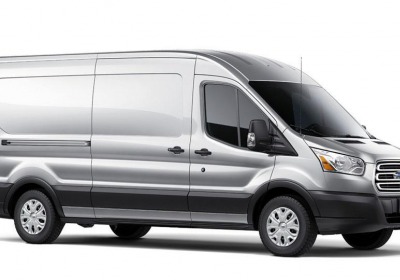Ford Transit van gets five-cylinder turbodiesel
Mon, 10 Dec 2012
The full-size Ford Transit van that replaces the E-series Econoline in late 2013 will have a turbocharged five-cylinder diesel in its powertrain lineup.
Today Ford uses the 3.2-liter engine in the Ranger pickup sold in international markets. The engine, which wears Ford's Power Stroke marketing name for diesel engines, is built in South Africa and will be exported to the Transit assembly plant near Kansas City, Mo.
The Power Stroke name is also used for a 6.7-liter V8 diesel used in Ford's full-sized heavy duty pickup, the F-series Super Duty.
The five-cylinder Power Stroke has not been rated for U.S. use yet, but in Europe it makes 197 hp and 347 lb-ft of torque. Ford says the engine delivers 90 percent of peak torque between 1,700 and 3,500 rpm. It will be mated to a six-speed automatic transmission.
Ford said the Transit will also offer a menu of gasoline engines, including the turbocharged EcoBoost 3.5-liter V6 that is a popular option on the F-150 light-duty pickup.
The move marks a return of a diesel engine option to Ford's full-size van. The E-series offers a choice of V8 and V10 gasoline engines, but a diesel option was dropped after the 2010 model year.
The competing Chevrolet Express and GMC Savana full-size vans offer a 6.6-liter V8 turbodiesel, marketed as the DuraMax. The engine is rated at 260 hp and 525 lb-ft of torque.
The Chrysler Group does not sell a full-sized van in the United States but plans to add one, wearing the Ram ProMaster name, in fall 2013. That van will be based on the Fiat Ducato van sold in Europe and other markets.
Ford already sells the Transit van in Europe and the U.S. version will be based on that design, which is taller and narrower than the E-series.
The five-cylinder Power Stroke uses a cast-iron engine block, aluminum cylinder heads, double overhead camshafts and four valves per cylinder. The high-pressure fuel system operates at pressures up to 26,100 psi. The engine will be fitted with a selective catalytic reduction system to reduce emissions.
It's unlikely that the engine would be used in the F-150 light-duty pickup, as its power and torque ratings are below the gasoline engines used on the truck. Also, adding a diesel and its exhaust treatment system adds significant cost to the product.
By Dale Jewett

